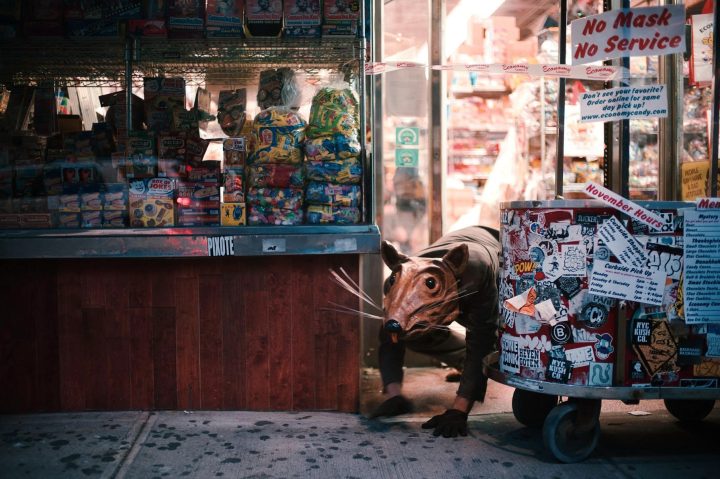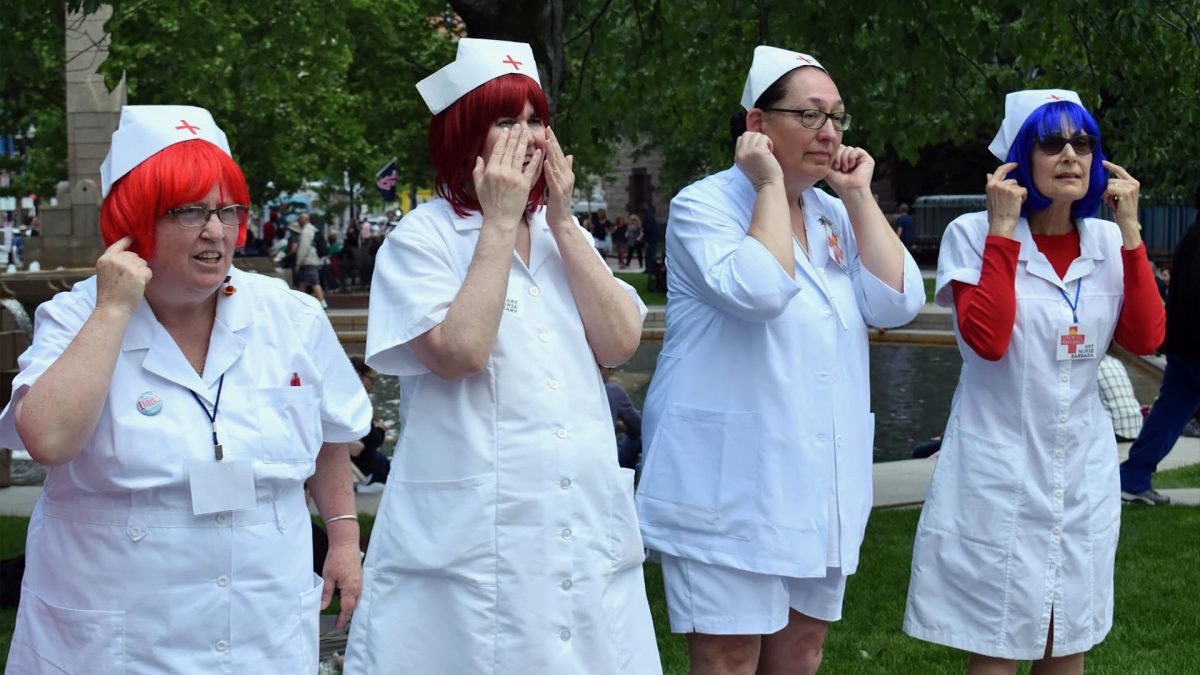
Before quarantine and the specter of mass disease and death loomed, public life in the city crackled with spontaneity and verve, and — ready or not — you became part of the audience. Subways and sidewalks teemed with mariachi buskers, bucket drummers, dance crews, and more. Depending on the route of one’s commute, you could be treated to a soulful song on a Chinese erhu or West African kora by virtuosic players. All versions of these performances are what curators might call immersive and socially engaged art but in the free, rollicking sphere of the unplanned — public space.
As the (first) world slowly reopens, Art in Odd Places’ (AiOP) kicks off its three-day, annual public art and performance festival on Friday, May 14th on Avenue C along 14th Street in Manhattan and west towards the Hudson River. It promises to revive public space from its COVID-induced coma like awakening sleeping beauty if she were a drag queen. Their mission statement reads, “AiOP reminds us that public spaces function as the epicenter for diverse social interactions and the unfettered exchange of ideas.” In a recent interview, AiOP’s founder and director, Ed Woodham, said,
Everyone here volunteered their time because of its mission to public space. Public space, really now more than ever, is sacred civic ground. And we are still exploring it. Our festival is a continual experiment of how to communicate in that space and how public space is a vital part of democracy, freedom, and independence.
From dancing in long lines at the voting booths to raising hell on the streets, public space remains a contested battlefield for social and political power. Woodham continues, “What is public space? If you have to push a door to go in somewhere, suddenly it becomes privileged or elitist. So public space becomes our space, no matter who you are,” or no matter what you have.

And these exclusive doorways are not limited to the entrances of board rooms or galleries, museums, auction houses, or theater venues. For multitudes of people in this country, the pandemic has also exposed the ways that the gates of inequality restrict access to the most basic needs, namely: housing, food, health care, and most recently, the COVID-19 vaccine. Against these dire conditions, public art may seem irrelevant or twee, but it does a simple but essential thing: reminds everyday people that they are not alone in this bizzarro moment, and miraculously and fortunately, they are still alive and kicking.
In some instances, public art helps to articulate the public’s shared frustrations with the current moment. For example, artist and curator Furusho von Puttkammer described this year’s theme and title NORMAL as a clap-back to any appeal to returning to the previous status quo. For von Puttkamer, normal is a violent and disciplinary construct. Out of 200 proposals, she and the team selected more than 60 projects activated throughout the weekend. She says they represent the best of what performance art has to offer: a queer disruption in space and time through a communal moment of splendor and absurdity.
Artists in the festival are also invoking site-specific histories lost to the void of cultural amnesia and addressing the challenging conditions of the day (all works 2021). Artist Anthony R. Green’s project “Temporary Resuscitation” as well as AnkLave Arts Alliance’s piece “In Memory Of,” reflect upon the Black lives stolen by police brutality. Artist and curatorial assistant Yasmeen Abdallah collaborates with Berdscarnival for a performance titled “On the Grid/Off the Grid: Manifesto on Location.” They will move along the length of 14th Street to mark the geography and significance of immigrant labor. Street sage and artist Al Diaz’s buoyant mural tells the story of our shared resilience. It is installed on Bowery, an area that has been described as NYC’s skid row but has also been a vortex for subculture, originality, and style.
Folded into its mission around public space, AiOP artists must negotiate with the shopkeepers and neighborhood inhabitants. Artist and curatorial manager Abdallah explains, “Space in New York is such a commodity, a luxury. And the public is taking back that public space. Participating artists must reach out to small businesses and organizations and build those connections.” In general, the traffic between shops and customers including restaurants has halted to a grind this past year. The transactional aspect of these exchanges and thus the financial growth of these areas have slowed but the human aspect of it has been compromised too. Artists can help to refresh these interactions and to renew the bonds between the businesses and the communities that can support its economic success and sustainability.

Abdallah continues, “Inspired by mutual aid models, how do we build community in this fraught and fractured time? As artists, our role and responsibility are to bring these issues to the forefront in a creative way to engage people.” Although there are many ways to occupy space, public art and performance can transform the public from a randomized entity into a community bound by engaging ideas in synch.
In the same way that a melody can fill a subway car with joy or sorrow, public art can crack open a callous heart, in live time. Even if it is a fleeting moment of shared laughter, public art reminds us that maybe we are in this thing called life, together, after all.
0 Commentaires